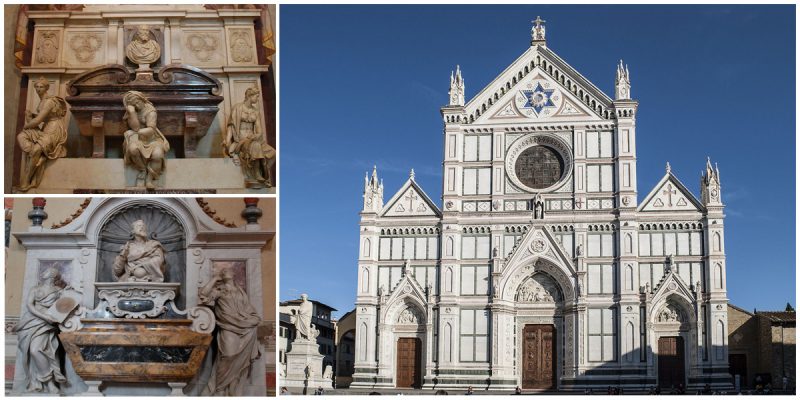The Basilica di Santa Croce in Florence, Italy is one of the most magnificent examples of Italian Gothic architecture. It is the principal Franciscan church in the city which is the oldest and largest of its kind in the world.
The construction of the basilica begun in 1294 and possibly it was designed by the architect Arnolfo di Cambio. It was finished in the 15th century, except the façade and the campanile in Gothic Revival style which were built in the 18th century.
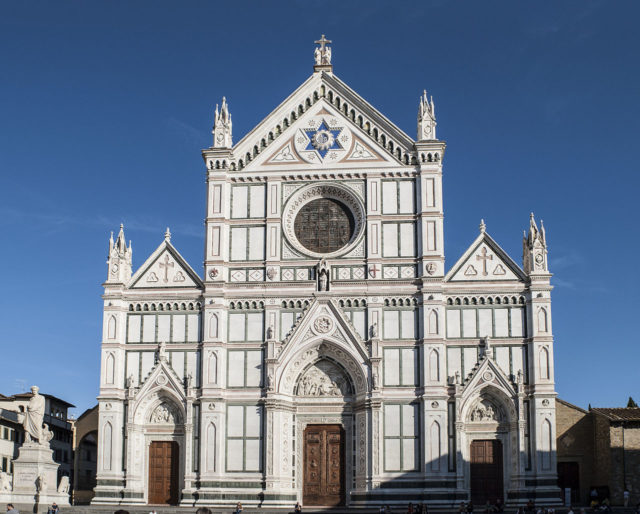
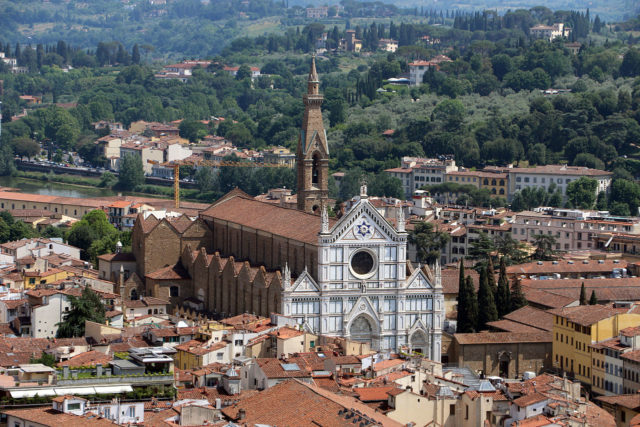
Santa Croce is not only a church, but also an art museum and a burial place where some of the most famous Italians were buried, including Michelangelo, Machiavelli, Galileo, Gentile, Rossini, and the poet Foscolo. Around the world, it is also known as the Temple of the Italian Glories.
On its interior walls, there are Renaissance frescoes by Giotto, Taddeo Gaddi, and Agnolo Gaddi. There are also remarkable sculptures made by the Renaissance masters Donatello, Rossellino, Maiano, Andrea Della Robbia, and Mino da Fiesole.
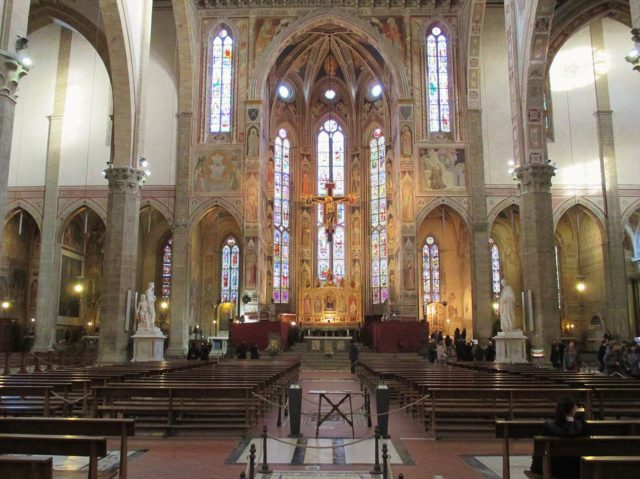
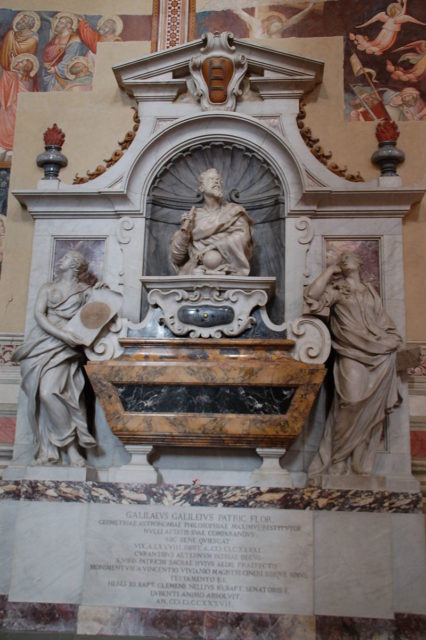
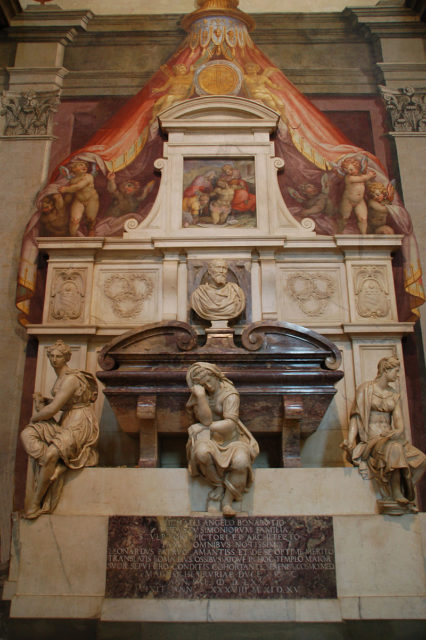
The main cloister of the basilica houses, the Cappella de Pazzi, was completed in the 1470s and at the time of its construction the architect who designed the dome of the Duomo, Filippo Brunelleschi, was partly involved. The interior was rebuilt in 1560 by the architect Giorgio Vasari, and in the process, many of the decorations in the church were damaged, and most of the previous altars on the screen were lost.
In the 19th century, the façade was designed by the architect Niccolo Matas who added a Star of David into the composition. The first tomb which can be seen from the entrance is that of Michaelangelo and directly across him is the tomb of Galileo.
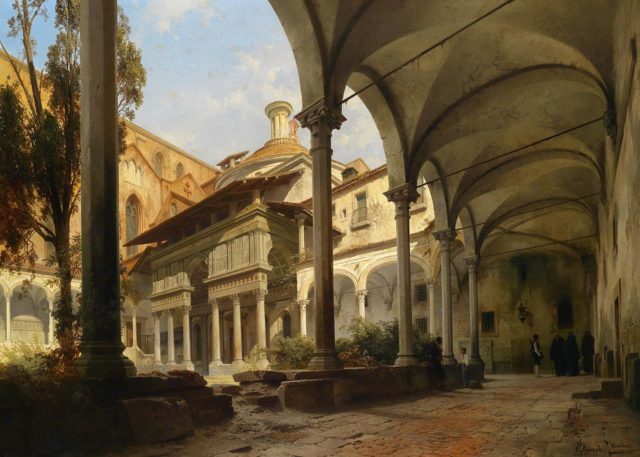
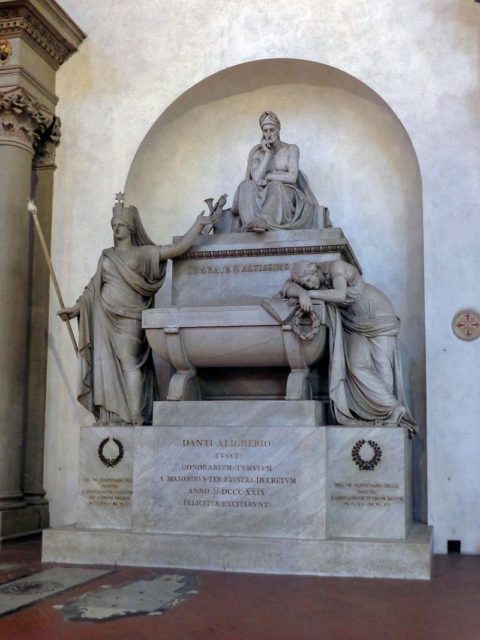
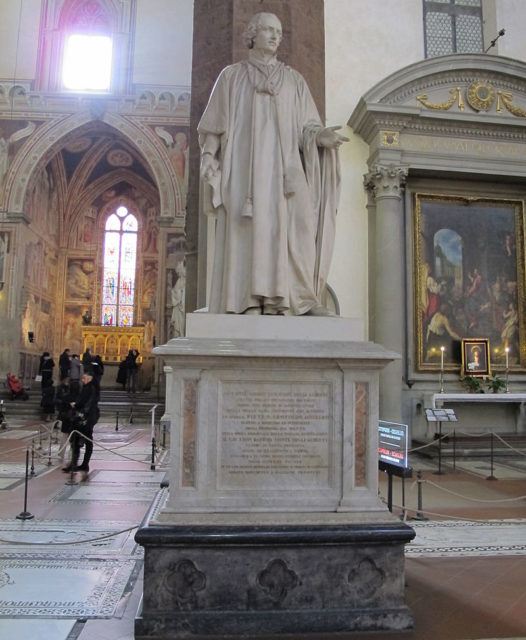
According to legend, he chose this spot because when the graves open on the Judgement Day, the first thing that he would see would be the dome of Brunelleschi through the open doors of the basilica. As in many basilicas in Italy, some of the chapels were owned by wealthy families and later space was also granted to notable people all across Italy.
Read another story from us: Michelangelo refused to be paid for his work on St. Peter’s Basilica
Monuments were erected in this church for 500 years. Other notable people that were buried here are Carlo Marsuppini, the chancellor of the Republic of Florence in the 15th century, the nuclear physicist Enrico Fermi, the poet Vittorio Alfieri, and the historian Leonardo Bruni. There is also a 19th-century tribute to the poet Dante Alighieri near the tombs of Galileo and Michelangelo.
